Megjegyzések / Kérdések (42)
![]() MOUTHON írta:
MOUTHON írta:
Bonjour, Il n y a aucune explication pour les finitions des manches et tour du cou. Est ce votre choix ou un oubli? Merci
14.08.2022 - 11:31A DROPS Design válasza:
Bonjour Mme Mouthon, il n'y a aucune bordure supplémentaire à crocheter dans ce modèle, mais vous pouvez volontiers en faire une si vous le souhaitez. Bon crochet!
15.08.2022 - 08:27
![]() Gerda írta:
Gerda írta:
Na het 3de patroondeel M1 en de 4 toeren vasten staat er "ga verder en haak heen en weer met 1v in iedere vast en meerder in de 1ste toer 28-31-...... vasten" maar hoeveel toeren vasten moet men hier nog doen. slechts 1 of tot je het juiste aantal cm hebt?
08.03.2020 - 13:51A DROPS Design válasza:
Dag Gerda,
Op dat punt meerder je alleen in de eerste toer van vasten een aantal steken zoals aangegeven in het patroon. De volgende toeren daarna haak je dus 1 vaste in elke vaste tot een hoogte van 18-19-20-21-22-23 cm ((staat in eerste regel van de paragraaf daaronder).
10.03.2020 - 19:57
![]() Dorothy Harrington írta:
Dorothy Harrington írta:
Could I use Lima for this pattern?
29.01.2019 - 21:46A DROPS Design válasza:
Dear Mrs Harrington, DROPS Lima belongs to yarn group B our yarn while this top is worked with DROPS Cotton Viscose which was yarn group A - find alternatives by trying our yarn converter and read more about alternatives here. Happy crocheting!
30.01.2019 - 07:35
![]() Susan Starke írta:
Susan Starke írta:
Sehr schöne Jacke für laue Sommerabende.Einfach und schnell gehäkelt.
06.06.2016 - 21:05
![]() Willers írta:
Willers írta:
Thank you for the lovely pattern. I am having difficulty with the M1. Please translate in words. Thanks again.
12.05.2016 - 23:12A DROPS Design válasza:
Dear Mrs Willers, start reading diagram from the right towards the left from RS (1st row = with arrow), and from the left towards the right from WS. On 1st row, you will then work: 1 ch (= 1st sc), *1 sc in next st, 1 picot, 1 sc in next 2 sts*, repeat from *-*. On row 2, chain 3 (=1st dc), *ch2, skip 2 sc, 1 dc in next dc*, repeat from *-*. Happy crocheting!
13.05.2016 - 09:11
![]() Elizabeth írta:
Elizabeth írta:
Elizabeth 21.06.2015 kl. 21:15: Zou dit patroon ook met Drops Cotton Merino gehaakt kunnen worden? (Staat niet bij alternatieve garens).
22.06.2015 - 09:30A DROPS Design válasza:
Hoi Elizabeth. Nee, Cotton Merino is te dik voor dit model. Probeer eventueel een proeflapje te haken en zien welk naald je nodig hebt voor de juiste stekenverhouding (22 stk/v = 10 cm) en kijk of je de structuur mooi vindt (ik denk dat het te stug wordt).
23.06.2015 - 11:56
![]() Ingrid írta:
Ingrid írta:
Is het ook mogelijk om langere mouwen aan het vestje te maken? Zo ja, hoe kan ik dat het beste doen?
30.04.2014 - 12:09A DROPS Design válasza:
Wij ondersteunen vragen over de patronen zoals onze designafdeling ze heeft gemaakt, maar we helpen niet bij het maken van persoonlijke aanpassingen. Wellicht is er een haak- of breigroep bij u in de buurt met mensen die u hierbij willen helpen.
30.04.2014 - 21:37
![]() Schiller, Birgit írta:
Schiller, Birgit írta:
Ich habe eine Frage zu den Zunahmen. Es fängt bei mir schon nach dem M1 an. Danach habe ich bei Größe S 154 fM und soll nun 39 Maschen gleichmäßig verteilt aufnehmen. Was heißt denn hier gleichmäßig? Wenn ich 154/39 teile komme ich auf 3,94 Maschen... Wie soll ich jede 3,94 Masche zunehmen? Aufrunden auf 4 geht ja auch nicht, dann komme ich ja wieder mit dem Muster nicht hin. Auch weiter unten das selbe Problem.Wie sind denn da nun die Abstände?
22.09.2013 - 22:40A DROPS Design válasza:
Liebe Birgit, die Aufnahme ist in einer Reihe mit festen Maschen, daher beeinträchtigt es das Muster nicht. Sie häkeln nachher das Muster einfach über die grössere Maschenzahl. Natürlich können Sie nur nach ganzen Maschen aufnehmen, achten Sie einfach darauf, dass es (schön verteilt) insgesamt 39 M sind.
23.09.2013 - 08:18
![]() Erie írta:
Erie írta:
Dank u wel voor uw antwoord. Helaas is me nog niet duidelijk wat ik dan verkeerd doe. Stekenaantal is precies zoals beschreven. Misschien gelijk na de pas al gaan minderen?
10.06.2013 - 13:13A DROPS Design válasza:
Met de juiste stekenverhouding (22 stk/v) per 10 cm zou je op de juiste afmetingen komen. Controleer of de stekenverhouding klopt.
11.06.2013 - 15:16
![]() Erie írta:
Erie írta:
Prachtig patroon, maar ik heb een vraag. De pas heb ik klaar, afmeting klopt. Nu heb ik zo'n 10 cm van de panden gedaan, maar het werk is inmiddels al 7 cm breder geworden en ik ben nog lang niet aan het minderen toe. Ik heb uiteraard niet gemeerderd ;) Wat doe ik verkeerd?
09.06.2013 - 16:01A DROPS Design válasza:
Het werk moet niet breder worden. Het aantal stk moet gelijk blijven tot je gaat minderen zoals beschreven.
10.06.2013 - 12:43
Hayfield Beauty#hayfieldbeautycardigan |
|||||||||||||||||||
 |
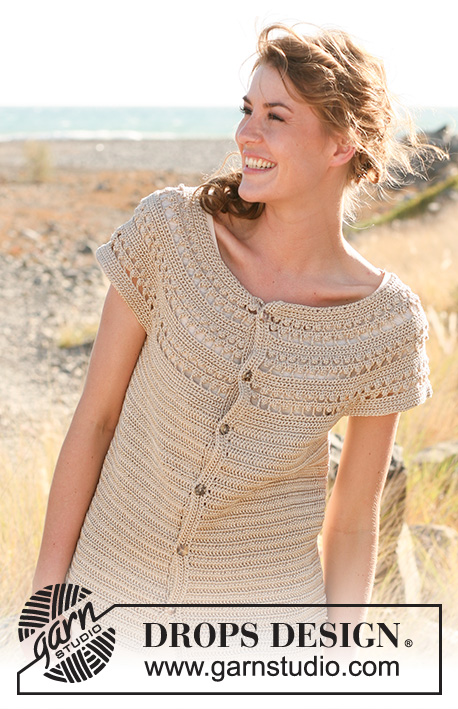 |
||||||||||||||||||
Horgolt DROPS kardigán csipkemintával és kerek vállrésszel "Cotton Viscose" fonalból. A darabot felülről lefelé készítjük. Méret: S - XXXL.
DROPS 130-10 |
|||||||||||||||||||
|
HORGOLÁSI TANÁCS: A sor első erp-ja helyett 1 láncszemet horgolunk. Minden sort egy, a sor szélétől számított 3. láncszembe szúrt kúszószemmel fejezünk be. A sor első erp-ja helyett 3 láncszemet horgolunk. Minden sort egy, a sor szélétől számított 3. láncszembe szúrt kúszószemmel fejezünk be. JAVASLAT A SZAPORÍTÁSHOZ: 2 erp 1 erp-be öltésével szaporítunk. 2 erp 1 erp-be öltésével szaporítunk. JAVASLAT A FOGYASZTÁSHOZ Úgy kezdjük, mint 1 erp-t, de az utolsó áthúzással várunk (= 2 hurkot hagyunk a tűn), majd elkészítjük a következő erpt is, de az utolsó áthúzásnál a tűn levő minden hurkon áthúzzuk a szálat. MINTA: Lásd az alábbi leírást vagy M.1-es diagramot. A diagram a mintát a színe oldal felől mutatja. 1. sor: 1 lsz (= 1 rp), 1 rp a köv szembe. * 4 lsz, 1 ksz az 1. lsz-be (= pikó)), 1 rp a köv 3 szem mindegyikébe.* Ism a *-* közötti részt, amíg 2 szem marad, majd 1 pikó, és 1 rp az ut 2 szembe. Fordítsuk meg a darabot. 2. sor: 5 lsz (= 1 erp+ 2 lsz), 1 rp + 1 pikó + 1 rp-t kihagyunk, a köv rp-ba 1 erp. * 2 lsz, 1 rp + 1 pikó + 1 rp-t kihagyunk, 1 erp a köv rp-va. * Ism a *-* közötti részt a sor végéig, fordítsuk meg a darabot. 3. sor: 1 lsz, * 1 rp + 1 pikó + 1 rp a lsz-íve, 1 rp a köv erp-ba.* Ism a *-* közötti részt a sor többi részében. 4. sor: 6 lsz (= 1 krp+ 2 lsz), 1 rp + 1 pikó + 1 rp-t kihagyunk, a köv rp-ba 1 krp. * 2 lsz, 1 rp + 1 pikó + 1 rp-t kihagyunk, 1 erp a köv rp-ba. * Ism a *-* közötti részt a sor végéig. -------------------------------------------------------- KARDIGÁN: A darabot felülről lefelé készítjük. Oda vissza készítjük, az eleje közepénél kezdve. Az 3,5 mm-es horgolótűvel készítsünk 132-148-164-172-191-207 lsz-ből álló LAZA láncszemsort (3 szemmel a forduláshoz) a Cotton Viscose fonalból. Az 1. sorban így haladjunk (= színe oldal): 1 erp a horgolótűtől a 4. szembe. * 1 lsz-t kihagyunk, 1 erp a köv. 3 lsz mindegyikébe.* Ismételjük meg a *-* közötti részt a sor végéig (az XXL + XXXL méretben az ut 3 lsz helyett az ut 2 lsz mindegyikébe öltött 1-1 erp-val fejezzük be a sort = 98-110-122-128-142-154 erp. OLVASSUK EL A FENTI TANÁCSOT A HORGOLÁSHOZ! Hor 3 sort oda-vissza haladva rp-kal, UGYANAKKOR, az 1. sorban egyenletesen elosztva szap 28-31-34-41-42-46 rp-t. OLVASSUK EL A FENTI TANÁCSOT A SZAPORÍTÁSHOZ! és az ut. sorban egyenletesen elosztva szap 28-31-34-42-42-47 szemet = 154-172-190-211-226-247 szem. Ezután folyt az M.1-es mintával (a sor elejét a diagramban nyíl jelöli) vagy olvassuk el a fenti magyarázatot a minta leírásához. Az M.1-es minta után 1 sor rp minden rp-ba és 2 rp minden lsz-ívbe = 154-172-190-211-226-247 rp. 3 sor rp, UGYANAKKOR egyenletesen elosztva szap 39-42-45-48-51-57 szemet = 193-214-235-259-277-304 rp a sorban. Ezután folyt az M.1-es mintával újra (a sor elejét a diagramban nyíl jelöli) vagy olvassuk el a fenti magyarázatot a minta leírásához. Az M.1-es minta után 1 sor rp minden rp-ba és 2 rp minden lsz-ívbe = 193-214-235-259-277-304 rp. 3 sor rp, UGYANAKKOR egyenletesen elosztva szap 27-33-33-39-42-45 szemet = 220-247-268-298-319-349 rp a sorban. Ezután folyt az M.1-es mintával újra (a sor elejét a diagramban nyíl jelöli) vagy olvassuk el a fenti magyarázatot a minta leírásához. Az M.1-es minta után 1 sor rp minden rp-ba és 2 rp minden lsz-ívbe = 220-247-268-298-319-349 rp. 3 sor rp, UGYANAKKOR egyenletesen elosztva szap 27-33-33-39-42-45 szemet = 247-280-301-337-361-394 rp a sorban. Folyt minden rp-ba 1 rp-val oda-vissza haladva, UGYANAKKOR az 1. sorban egyenletesen elosztva szap 28-31-34-34-42-45 szemet = 275-311-335-371-403-439 rp a sorban. Amikor a darabunk 18-19-20-21-22-23 cm, a következő sorban így haladjunk: -43-47-53-59-661 erp (vagyis 1 erp minden rp-ba) (eleje),12 lsz. Hagyjunk ki 66-70-74-80-84-88 rp-t az előző sorból (az ujja alatt), 71-85-93-105-117-131 erp (háta) 12 lsz, hagyjunk ki 66-70-74-80-84-88 erp-t az előző körből (az ujja alatt), majd 36-43-47-53-59-66 erp-t (=eleje). Folyt 1 erp minden erp-ba és 1 erp minden lsz-be az ujja alatt = 167-195-211-235-259-287 erp. Tegyünk jelölőt az ujja alatt horg 12 lsz közepére, mind a két oldalon (háta= 83-97-105-117-129-143 erp, a két eleje = 42-49-53-59-65-72 erp). Folytassuk minden erp-be 1 erp horgolásával minden szemen. Amikor a darabunk 32-34-36-38-40-42 cm-es egyenletesen elosztva fogy 7 szemet. Amikor a darabunk 34-36-38-40-42-44 cm-es, egyenletesen elosztva fogy 8 erp-t = 152-180-196-220-244-272 erp. Amikor a darabunk 39-41-43-45-47-49 cm-es, egyenletesen elosztva szap 10 erp-t. Amikor a darabunk 41-43-45-47-49-51 cm-es, egyenletesen elosztva szaporítsunk 10-10-12-12-12-12 erp-t = 172-200-218-242-266-294 erp. Amikor kb 1 cm hiányzik ahhoz, hogy a darabunk 52-54-56-58-60-62 cm-es legyen, 2 sort horg, minden szembe 1 rp-val, vágjuk el a fonalat és dolgozzuk el a szálat. PÁNT: 4 sor rp oda-vissza haladva a bal eleje szélén - minden 10 cm-re kb 22 rp-t horgolunk. Ügyeljünk arra, hogy az eleje szegély szép egyenletes legyen, ne húzza össze, és ne is álljon el az eleje szélén. Ism a jobb eleje szélén, miközben, ugyanakkor, a 2. sorban egyenletesen elosztva 6-6-6-7-7-7 gomblyukat készítünk. A felső gombnak a nyakkivágás szélétől körülbelül 2 cm-re kell lennie, és a gombok között körülbelül 8-8 cm legyen. 1 gomblyuk: 2 lsz, 2 rp-t kihagyunk, 1 rp a köv szembe. A köv sorban minden rp-ba és lsz-be 1-1 rp-t horg. ÖSSZEÁLLÍTÁS: Varrjuk fel a gombokat a bal elejére. |
|||||||||||||||||||
Diagram magyarázatok |
|||||||||||||||||||
|
|||||||||||||||||||
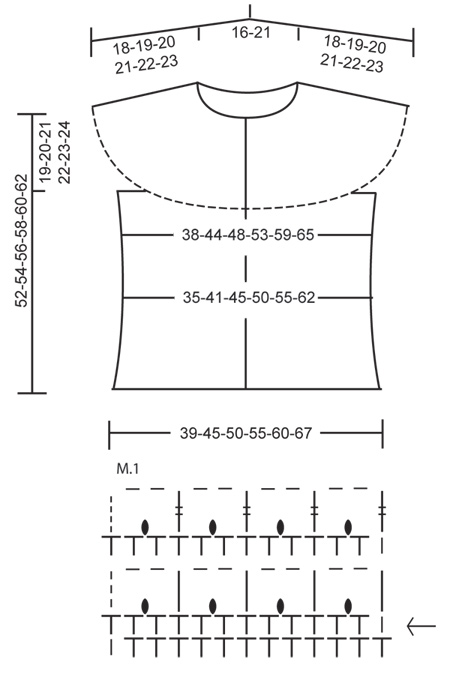
|
|||||||||||||||||||
Elkészítette ezt a mintát?Akkor adja a képeihez a #dropspattern #hayfieldbeautycardigan tageket, vagy küldje be a képet a #dropsfan galériába. Segítségre van szüksége a modell elkészítéséhez? 7 tutorial videót találhat, és egy kérdés/felelek részt, és még többet, ha a mintát megkeresi a garnstudio.com oldalán. © 1982-2025 DROPS Design A/S. Minden jog fenntartca. Ez a documentim, az összes részével védelem alatt áll. A weboldalunkon többet olvashat arról, hogy mit tehet és mit nem a mintáinkkal. |
|||||||||||||||||||







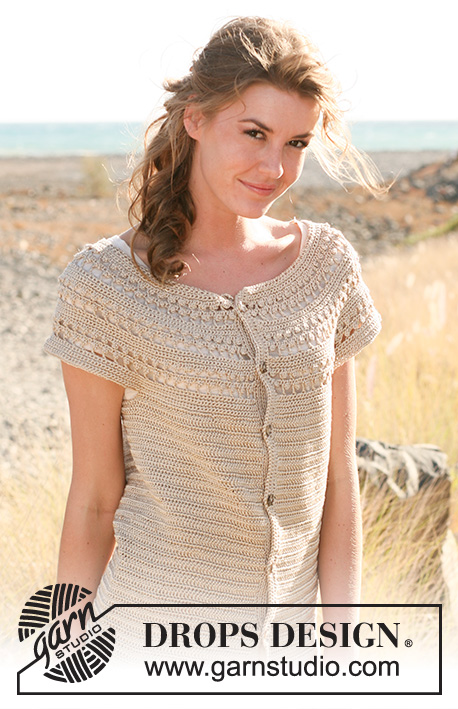

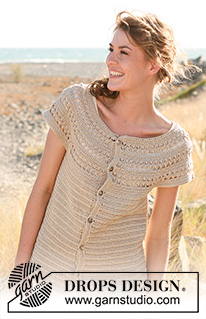
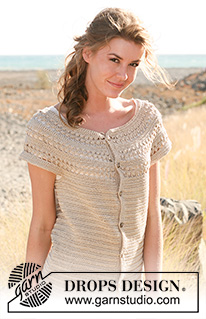



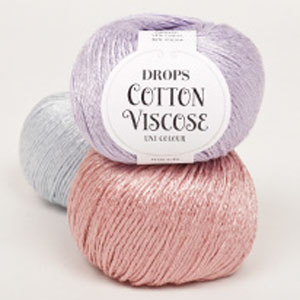
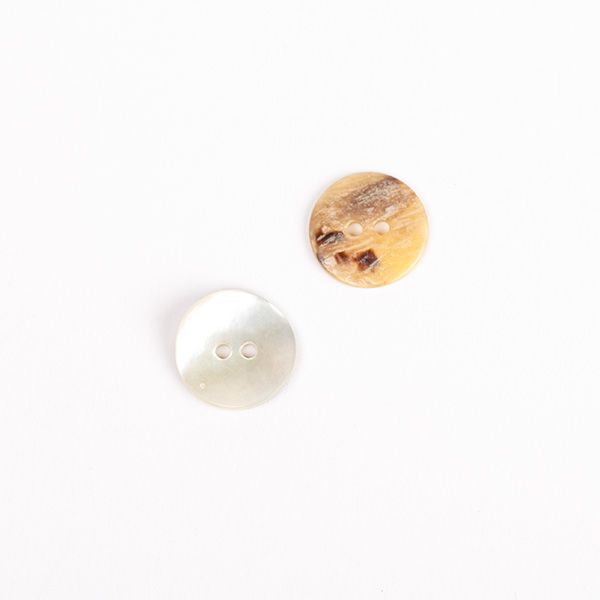

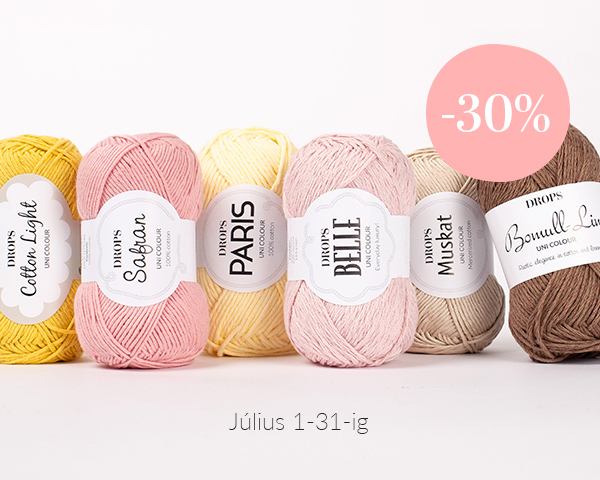

















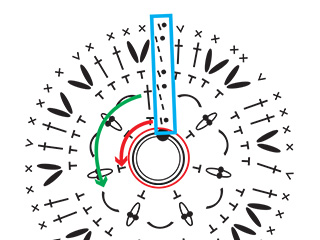







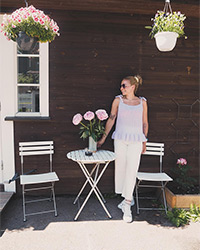
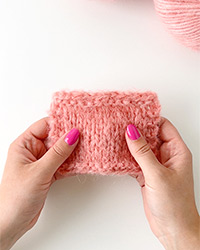
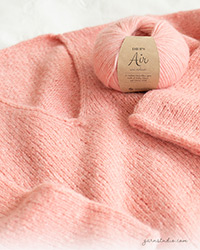


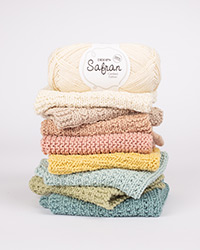
Post a comment to pattern DROPS 130-10
Szívesen vesszük, ha megosztja velünk gondolatait erről a mintáról.
Ha kérdést szeretne feltenni, ügyeljen arra, hogy a megfelelő kategóriát válassza ki, így fegyorsíthatja a válaszadás folyamatát. Það verður að merkja við svæði merktri með *.